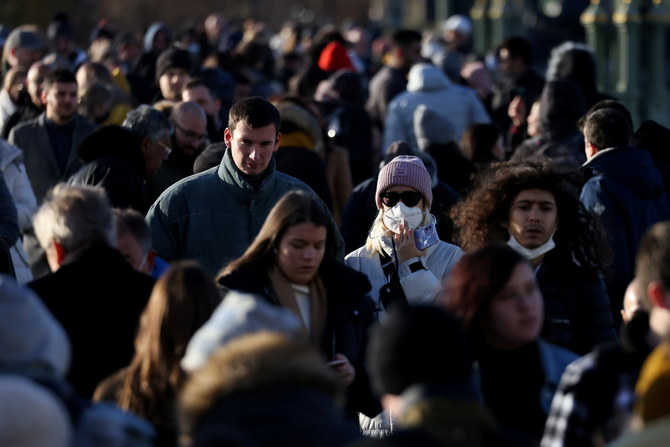
- ARAB NEWS
- 13 Jul 2025

We are now into the third year of the COVID-19 pandemic and many are saying “enough is enough,” sharpening the political divides over public health. But with skyrocketing numbers of cases thanks to the highly infectious omicron variant, there are still many requirements if we are to even begin contending with the magnitude of change required to move past the COVID-19 years.
The recent increase in cases serves as a reminder that the pandemic is not yet over. In January 2020, when the first data was released, there was one statistic that stood out: The last contact tracing will occur in 2027. That date still holds as to when a credible international health body can declare the COVID-19 pandemic to be over.
The nature of omicron’s spread affects labor pools because of the requirement to isolate those who test positive. This can affect, for example, airline employees’ working time and rotation of schedules. How the virus evolves over the next several months and years will determine what the end of this global crisis might look like.
There is evidence to suggest that certain measures may remain necessary as the virus wave caused by omicron continues to spike around the world. The attitudes of the opposing sides on what to do next need to step back and reassess their colliding positions. The more arguments that occur, the longer the fallout will be. The evolutionary progress of the original COVID-19 virus is ongoing and there is no true end in sight because of causal factors.
More than 800,000 COVID-19 deaths have occurred in the US, surpassing the estimated 675,000 deaths that occurred in the country during the great influenza pandemic of 1918. The current pandemic reduced global economic growth by about 3.2 percent in 2020, with trade declining by 5.3 percent, while an estimated 75 million people entered extreme poverty and 80 million more are undernourished compared with pre-pandemic levels. Although the COVID-19 and 1918 influenza pandemics stand alone in terms of morbidity and mortality, evidence suggests the frequency of infectious disease emergencies will increase sharply in the future.
More than 100 countries ordered lockdowns to slow the spread of COVID-19, shutting down commercial and leisure activities to preserve health system capacities. Now, not every country or locality is facing the same pathogen circumstances. Testing requirements, lockdowns or limits on movement are occurring on every continent and are continuing to impact trade logistics. Queues for PCR tests in some countries, when people were still in their recovery period, undoubtedly illustrate a significant shortcoming in public health systems. This phenomenon may occur again depending on supply and demand factors. Perhaps recovery is further off than is being assumed by some observers.
With the supply chain lags comes inflation, with food and other daily necessities the first to rapidly increase in price. By the end of this year, a growing economic downturn in key markets, combined with the continuation of the virus in some manner, is going to be an ongoing challenge.
There are two reasons why the end of the COVID-19 pandemic seems to be getting further away. The first is the fatigue and rage that accompany the pandemic and take their toll on families and communities. The second is the way in which the virus taxes the ability of local and state authorities to contend with its after-effects, such as the rules and regulations governing workplaces, transit and labor hours. Treating the “COVID years” as a global phenomenon that requires a joint approach is necessary for the foreseeable future.
How the virus evolves over the next several months and years will determine what the end of this global crisis might look like.
Dr. Theodore Karasik
Will the pathogen ultimately morph into another common cold (for some of the vaccinated) or a new variant that is more threatening, such as influenza or even worse? The global vaccination push has already administered nearly 10 billion doses and has shifted the evolutionary landscape of modern medical logistics and care, but it is not clear how the pathogen will behave in the future.
Overall, the pandemic timeline becomes important if one thinks about how global public healthcare has been ramped up to contend with vaccine delivery and mitigation programs. The entire system now faces a requirement for sturdiness based on the longevity of the pandemic. For now, the pathogen is under the control of humankind and not vice versa.